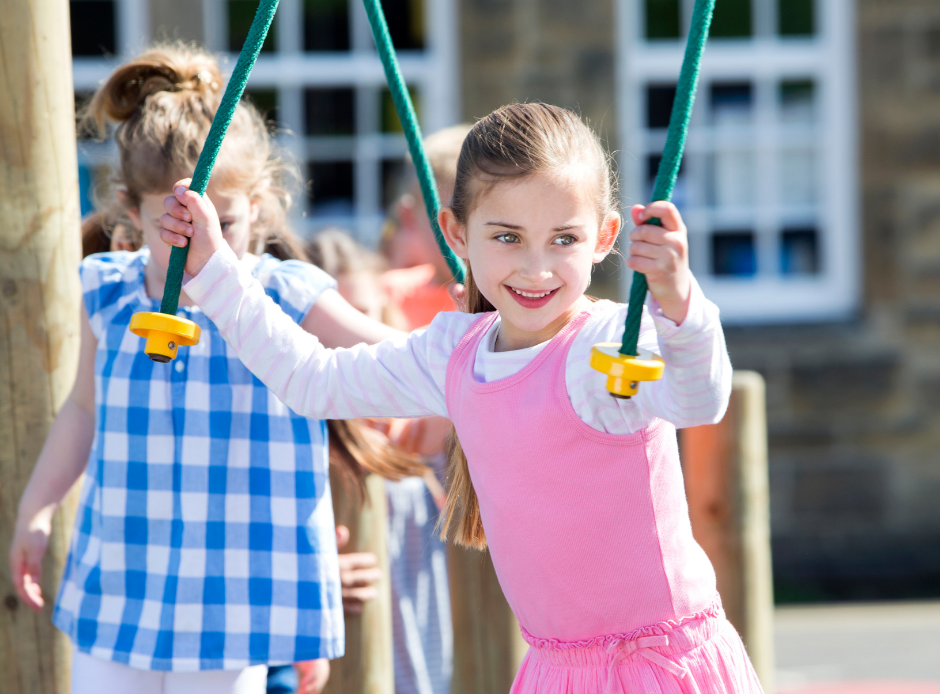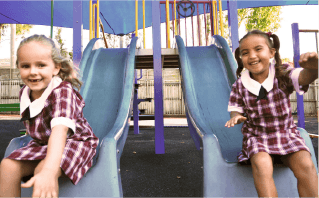
When it comes to proprioceptive activities for kids, there are a variety of benefits that can be gained. Kids who participate in these activities tend to have better self-regulation and lower anxiety levels. This is because engaging in these activities help children improve their cognitive skills, sensory processing, and emotional awareness. This article explains what proprioceptive activities are, when to use them and are great proprioceptive activities ideas for kids that can help them regulate their emotions and improve their overall well-being.
What is Proprioception?
Proprioception is part of the proprioceptive system. Receptors for the proprioceptive system are located in muscles, tendons, ligaments, joint capsules, and connective tissue. We depend on our proprioceptive system to help us make sense of movement experiences. For example, when we hold something in our hand, the proprioceptive system (muscles and joints around the object) tells us about the shape and size of the object.
How the Proprioceptive System works?
The proprioceptive system also has an important regulatory role in sensory processing, as proprioceptive input can assist in controlling responses to sensory stimuli. Proprioceptive input can be very calming for those who are easily overwhelmed by sensory stimulation. Proprioceptive input can be alerting for those who need awareness. Our body senses proprioception through messages sent to the brain from sensory receptors in our muscles and joints. These sensations from the muscles and joints tell us how our bodies are moving, what each body part is doing in relation to the others, and where they are in space.
The word proprioception is a term that means “body awareness”. When we’re talking about kids, it’s their ability to know where they are in relation to everything else around them. Children with poor proprioceptive abilities often have trouble controlling themselves and regulating their behaviour. In this article, we’ll discuss what proprioceptive activities are, how they can improve children’s behaviours, self-regulation, and anxiety levels, and provide some examples of simple things parents can do at home to help improve their child’s proprioception.
What are Proprioceptive Activities?
Proprioceptive activities are any activity that provides feedback to kids about where their body is in space. Since proprioception is all about understanding the relative position of one’s parts, the more information kids get through this system, the better they will know what their bodies are doing and how it relates to everything. It’s crucial to the brain, as it plays a significant role in self-regulation, coordination, posture, body awareness, speech and the ability to focus.
Every time we get a hug, jump up and down or wrap ourselves under a heavy blanket, we get proprioceptive input.
Proprioceptive Activities and Kids’ Behaviour
Occupational therapists often use proprioceptive activities to help kids with autism, ADHD, ADD, dyslexia, other learning disabilities, poor self-regulation, anxiety and other behavioural issues. They help provide the necessary feedback to improve their understanding of what’s going on around them.
How do You Know When Your Child Needs Proprioceptive Activities?
Kids who struggle with proprioception may constantly be fidgeting, have trouble sitting still or staying in line, crave sensory input, have meltdowns when their routine is disrupted, and generally find it hard to control themselves.
Proprioceptive activities can help by giving these kids feedback they need in order to better understand what’s happening around them.
Your child may benefit from proprioceptive activities if they fall into one of two categories.
Proprioceptive Seekers:
Children in this category need and proactively seek more proprioceptive input. They are often labelled as hyperactive as they are constantly seeking proprioceptive input to meet their sensory needs.
Sensory Seeking Behaviours:
- chew on objects
- hide in tight places
- prefer heavy blankets
- bump into things on purpose
- play rough games
- hold objects tightly
- constantly jumping
- often overstep boundaries
Proprioceptive Low Registration:
Kids in this category are under-responsive. This means that they can’t register the sensory input.
They are often:
- clumsy
- have low energy
- find it difficult to get out of bed in the morning
- don’t notice walls and objects on their way
- have a high pain tolerance
While kids in this category may not seek sensory stimulation, proprioceptive activities can encourage their development and get their bodies alert to be ready to carry on daily activities.
Easy Proprioceptive Activities For Kids You Can Try at Home
Some of these activities are best suited to kids who seek proprioceptive input, while others work better to increase the awareness in kids with low registration.
Both kinds can be beneficial if done correctly!
You may want to start by playing games that provide feedback through only one or two senses at a time – this helps your child gradually get used to the new input.
Simple proprioceptive activities for kids:
Hug them
Human contact is a great way to provide proprioceptive feedback, especially for kids who seek it out. Hugging and being hugged provides input through touch and help kids feel safe and loved.
Rock them
This is a classic calming activity for kids – and it’s also excellent proprioception practice. Rocking back and forth while holding your child can help them feel grounded, especially if they’re anxious or upset about something that happened earlier in the day.
Try to hold hands with your child
Like hugging, parents often take this for granted when their child is calm. Holding hands with your child gives them proprioceptive input through touch and can help keep them connected to you when they’re feeling overwhelmed.
Jump on a trampoline
This is an excellent way for kids to get lots of feedback at once. Trampolining also helps improve balance and coordination, which are good for proprioception.
Cuddle up in a blanket
If your child is struggling with anxiety or sensory issues on their own, wrapping them up snugly under a soft blanket can provide some great proprioceptive feedback. It’s best to wait until they’re feeling calm before attempting this one – if you try to wrap them up when they’re upset, it will only make things worse.
Play catch
This is a great way to get kids moving and provide proprioceptive input through movement. Throwing and catching a ball also helps improve hand-eye coordination, which is another skill that can be improved with proprioception exercises.
Steamroll
If you have an exercise ball, roll over your child’s body with the exercise ball firmly.
Bounce on a big ball
Similar to jumping on a trampoline, bouncing on a big ball provides a lot of input. It’s also a great way to work on balance and coordination.
Wrestle with your kid
Wrestling is an excellent way to get physical activity while also receiving sensory feedback. Make sure it’s okay with your child before trying this one – not everyone is comfortable being rough and tumble!
Deep pressure
Deep pressure activities are often passive and provide calming sensations. They are often used when a child has difficulty sitting still or transitioning from one activity to another. For example, you can use heavy blankets, weighted vests, weighted pads or toys, squeeze into tight spots, get a massage, sit or stand on a wiggle seat or wobble cushion or use compressions on muscles and joints.
Other activities include:
- Hanging (monkey bars, tree, rope)
- Stomping
- Wheelbarrow walking
- Crab walking
- Pushing
- Crawling
- Chewing (gum, crunchy foods, raw veggies)
- Drinking through a straw
- Squeezing (stress ball, play dough)
- Stretching and pulling on stretchy bands
- Jumping jacks
- Push-ups or chair push-ups
- Yoga poses
These activities provide powerful and lasting proprioceptive input. There are many other things you can do to help your child get the sensory input they need – it’s all about finding what works best for them. Watch for cues that your child is uncomfortable when using the activities and let them decide what activities they prefer, when they want to use it, and for how long.
Sensory Diet
A sensory diet is a personalised plan for providing your child with the sensory input they need to regulate their behaviour and emotions. It can be used in addition to or instead of traditional therapies, such as occupational therapy or speech therapy.
This plan should be tailored specifically for each child and should include various activities that provide different types of feedback. The goal is to help your child receive enough sensory input to feel comfortable in their own skin.
Sensory activities are not a cure-all for behavioural difficulties, but by providing proprioceptive and tactile feedback, you can improve your child’s self-regulation skills – making it easier for them to calm down when upset or frustrated without resorting to negative behaviours.
If you feel like your child could benefit from this type of plan, talk to your therapist or paediatrician about creating one.
The benefits of proprioceptive activities for kids are many. From improving their cognitive skills to regulating their emotions, these types of physical and mental stimulation can have a significant effect on the well-being of your child. If you want to create a personalised plan for your child be sure to download our free Sensory Diet printable.
Related Articles
AMA: How to Talk to Your Child About Disability




